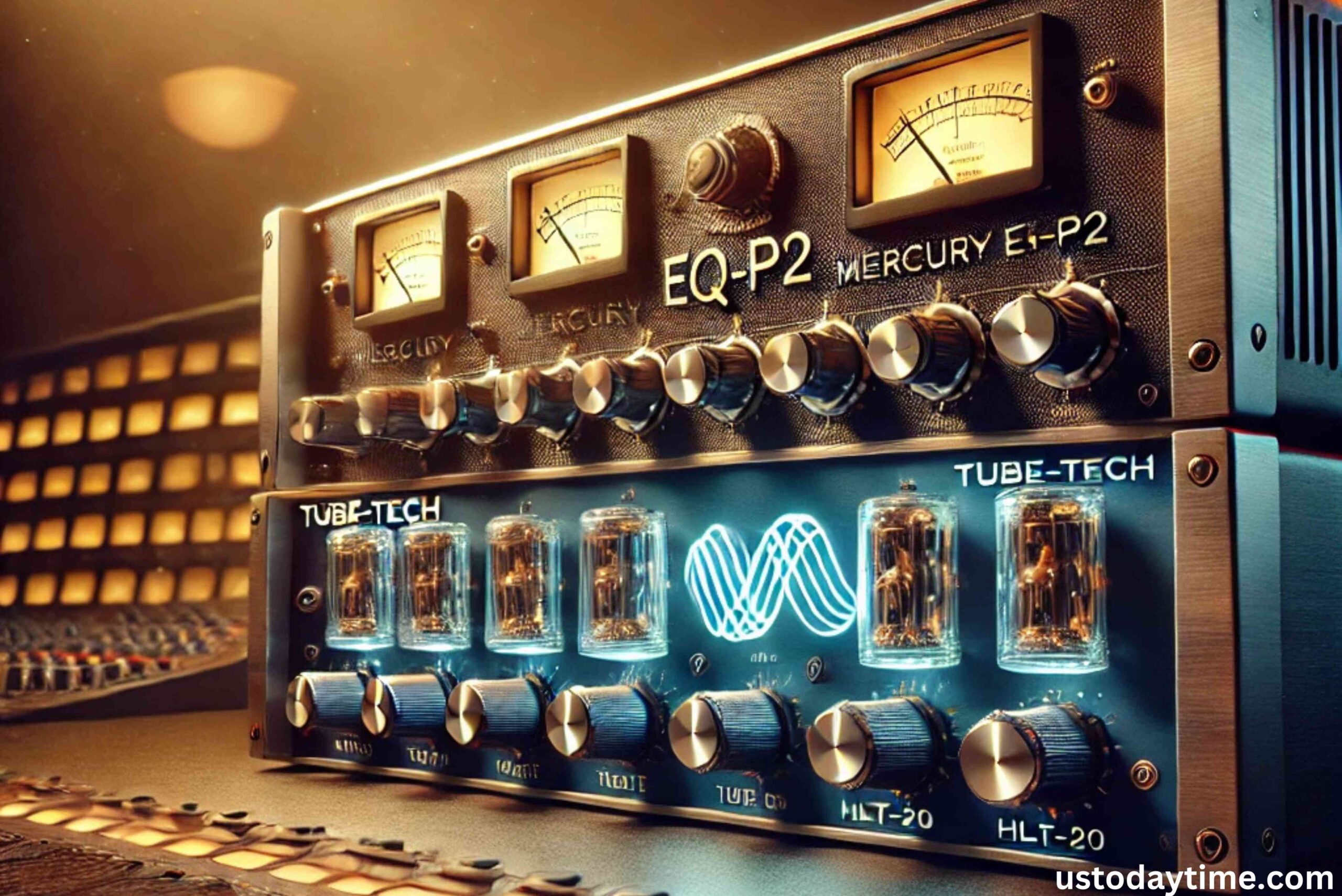Introduction
Let’s start with a simple analogy. Choosing the right equalizer is like picking the perfect lens for a camera. Both tools shape how the final product looks (or sounds). In the world of mastering, the Compare Mercury EQ-P2 Versus Tube Tech HLT-20 Mastering are top contenders, each offering unique strengths. Let’s break them down and see how they stack up against each other.
What is the Mercury EQ-P2?
The Mercury EQ-P2 is a modern take on the classic Pultec-style equalizer, revered for its rich, musical tones. Built with top-quality components, it excels in creating warm, vintage-inspired sounds. Whether you’re enhancing bass or giving your mids and highs a silky boost, the Mercury EQ-P2 stands out as a versatile, analog powerhouse.
Key Specifications
- Type: Analog, Pultec-style EQ
- Frequency Bands: Low, mid, high with customizable boosts and cuts
- Notable Features: Inductor-based EQ for smooth transitions
- Purpose: Ideal for adding warmth and depth to tracks
This EQ is perfect for anyone looking to recreate the sound of legendary vintage recordings.
What is the Tube Tech HLT-20?
The Tube Tech HLT-20 is a hybrid equalizer known for its innovative design. Unlike traditional EQs, it combines tube warmth with a tilt control feature, offering a unique approach to tonal balancing. It’s highly flexible, making it a favorite for modern mastering engineers who need precision and clarity.
Key Specifications
- Type: Hybrid analog EQ
- Special Features: Tilt EQ for efficient tonal balancing
- Frequency Bands: 3-band EQ with low and high shelving
- Purpose: Balancing tracks with precision while retaining natural warmth
If you’re after a tool that balances old-school charm with modern versatility, the Tube Tech HLT-20 is worth considering.
Key Features Comparison
Let’s get into the nitty-gritty of what sets these two equalizers apart.
Frequency Range and Control
- Mercury EQ-P2: Offers more refined control over individual frequency bands, making it ideal for surgical tweaks.
- Tube Tech HLT-20: Excels with its tilt EQ feature, which simplifies balancing tonal extremes.
Analog vs Hybrid Design
- The Mercury EQ-P2 stays true to its analog roots, delivering vintage-inspired warmth.
- The Tube Tech HLT-20 incorporates hybrid technology for a mix of warmth and precision.
Unique Selling Points
- Mercury EQ-P2: Inductor-based design for musical resonance.
- Tube Tech HLT-20: Tilt EQ for intuitive, quick tonal adjustments.
Sound Quality: Warmth vs Transparency
Sound quality is subjective, but here’s the general consensus:
- Mercury EQ-P2: Perfect for adding a warm, lush character to your mixes. Think of it as wrapping your track in a cozy blanket.
- Tube Tech HLT-20: Prioritizes transparency and clarity, making it a great choice for modern, pristine productions.
If you’re mixing jazz, blues, or anything vintage-inspired, the Mercury EQ-P2 shines. For EDM or pop, the Tube Tech HLT-20 might suit your needs better.
Design and Build Quality
Both models are built to last, but they cater to different aesthetic tastes.
- Mercury EQ-P2: Heavy, rugged design with a vintage feel.
- Tube Tech HLT-20: Sleek and modern, designed for easy integration into contemporary setups.
While the Mercury EQ-P2 feels like a nod to the past, the Tube Tech HLT-20 offers a forward-thinking design approach.
Ease of Use
- Mercury EQ-P2: Simplicity at its best. Its intuitive controls make it accessible even for beginners.
- Tube Tech HLT-20: The tilt EQ feature simplifies complex adjustments, but it may require a learning curve for traditionalists.
Compatibility in Mastering Studios

Both equalizers are versatile, but studio setups can make or break their performance.
- Mercury EQ-P2: Best suited for studios focusing on analog workflows.
- Tube Tech HLT-20: Seamless integration with hybrid and digital setups.
Your studio’s existing gear may influence which option feels more natural.
Pricing and Value
- Mercury EQ-P2: Higher price point, but its vintage charm justifies the cost.
- Tube Tech HLT-20: Offers better value for those needing modern versatility without breaking the bank.
Both are investments, but their long-term benefits outweigh the initial cost.
User Reviews and Feedback
Here’s what real users are saying:
- Mercury EQ-P2: Praised for its unmatched warmth and ability to bring tracks to life.
- Tube Tech HLT-20: Loved for its intuitive controls and modern features.
Which One is Right for You?
It boils down to your needs:
- Choose the Mercury EQ-P2 if you value vintage warmth and classic analog workflows.
- Opt for the Tube Tech HLT-20 if you need precision and flexibility for modern mastering.
Conclusion
Both the Mercury EQ-P2 and Tube Tech HLT-20 are exceptional tools, but they serve different purposes. One thrives on vintage vibes, while the other excels in modern precision. Whichever you choose, you’re investing in a piece of gear that can elevate your mastering game.
FAQs
1. What makes the Mercury EQ-P2 unique?
The Mercury EQ-P2’s inductor-based design and Pultec-inspired architecture give it unparalleled warmth and musicality.
2. Is the Tube Tech HLT-20 suitable for beginners?
Yes! Its intuitive tilt EQ makes it beginner-friendly while still offering advanced features for professionals.
3. Can I use the Mercury EQ-P2 for modern genres like EDM?
While it excels in vintage sounds, it can still add depth to modern genres, though it’s not its primary strength.
4. Which equalizer offers better value for money?
The Tube Tech HLT-20 provides excellent value due to its hybrid design and versatility.
5. Are these equalizers compatible with digital setups?
Yes, both are compatible, though the Tube Tech HLT-20 is better suited for hybrid and digital environments.
